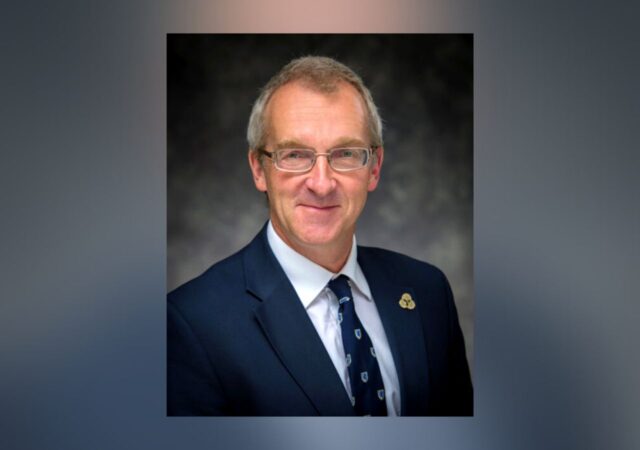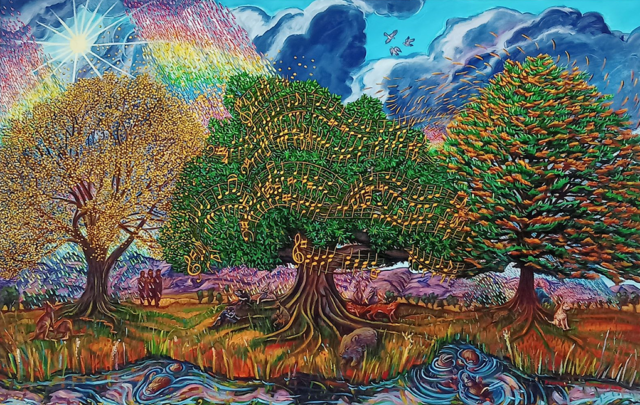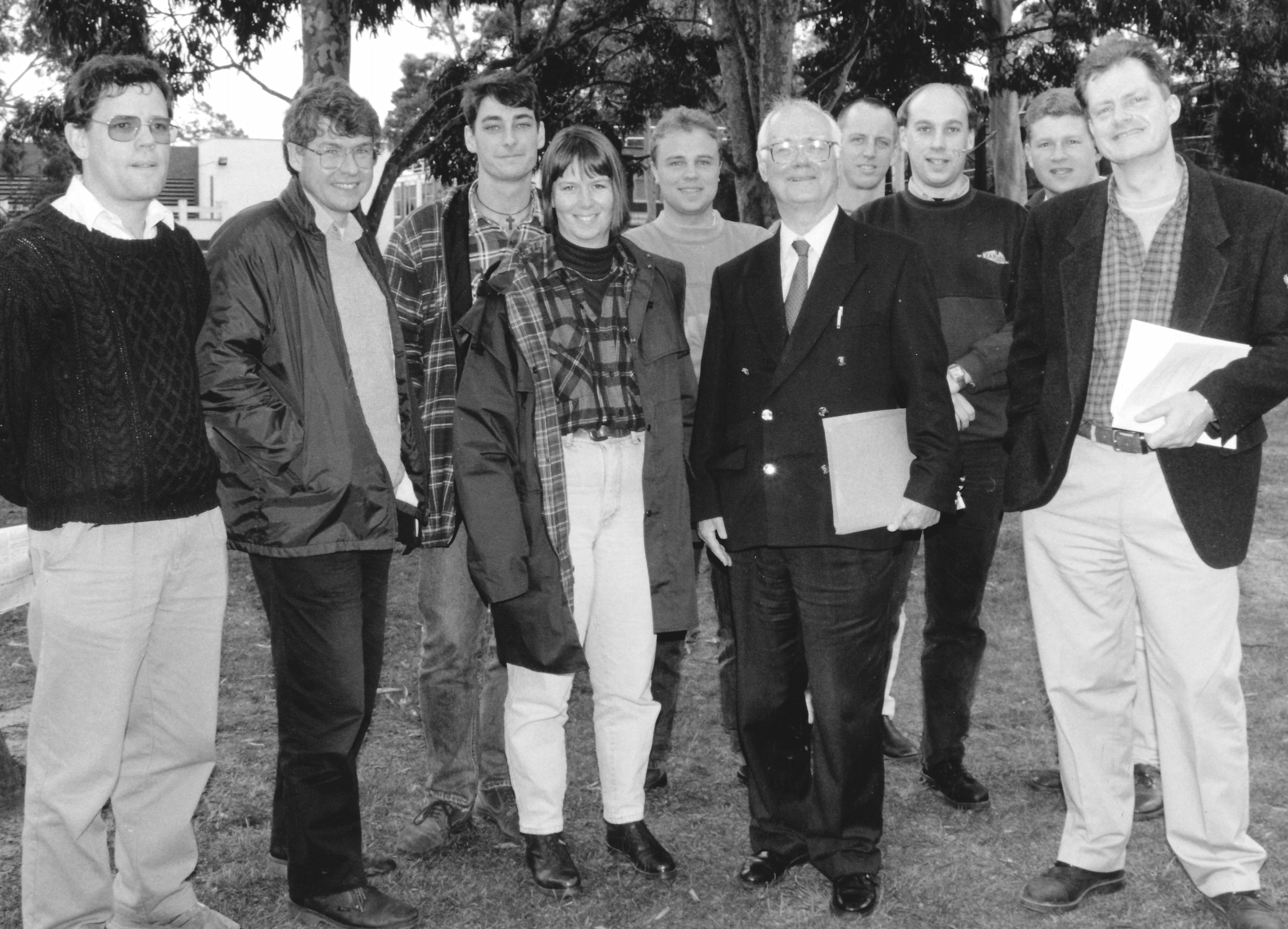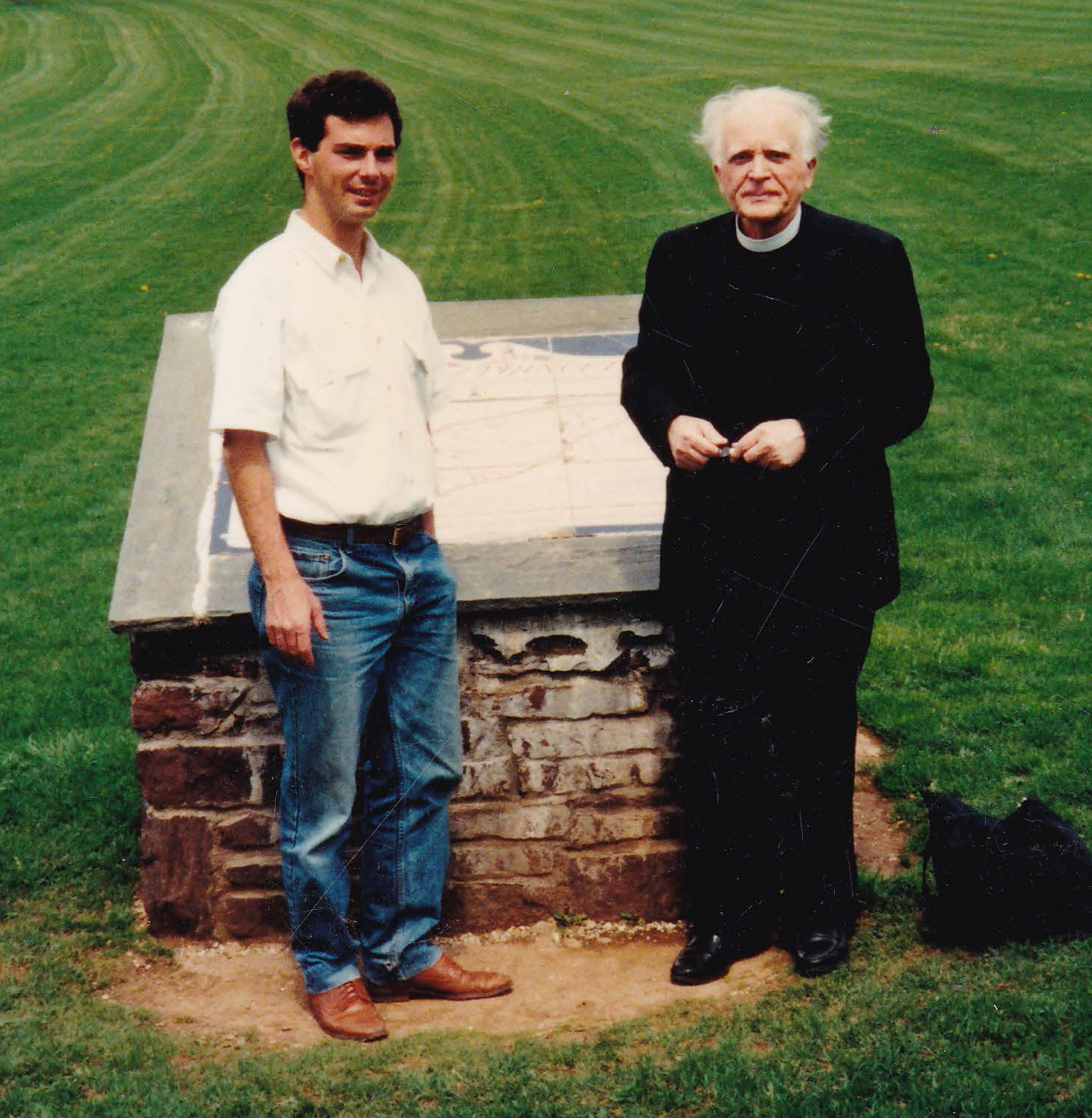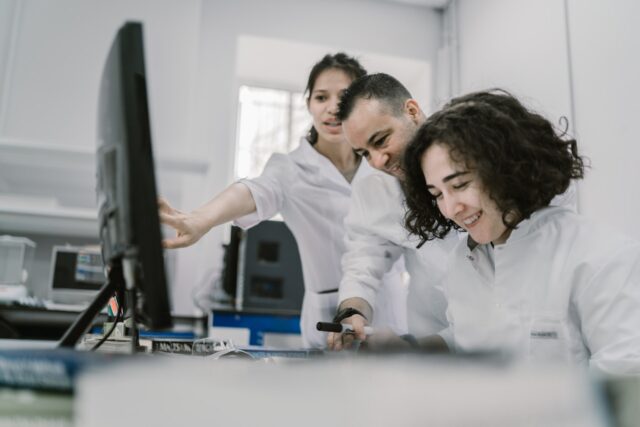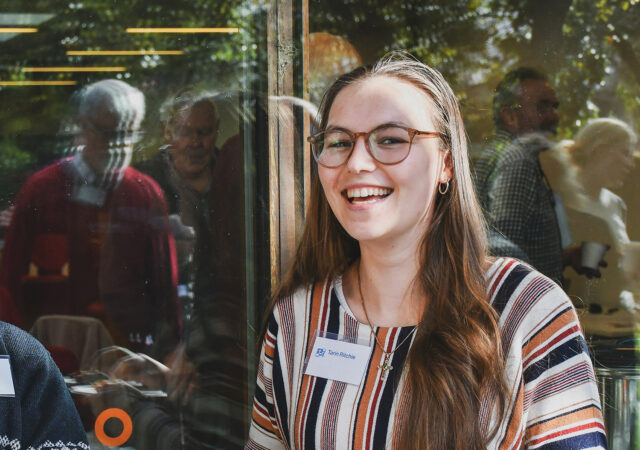
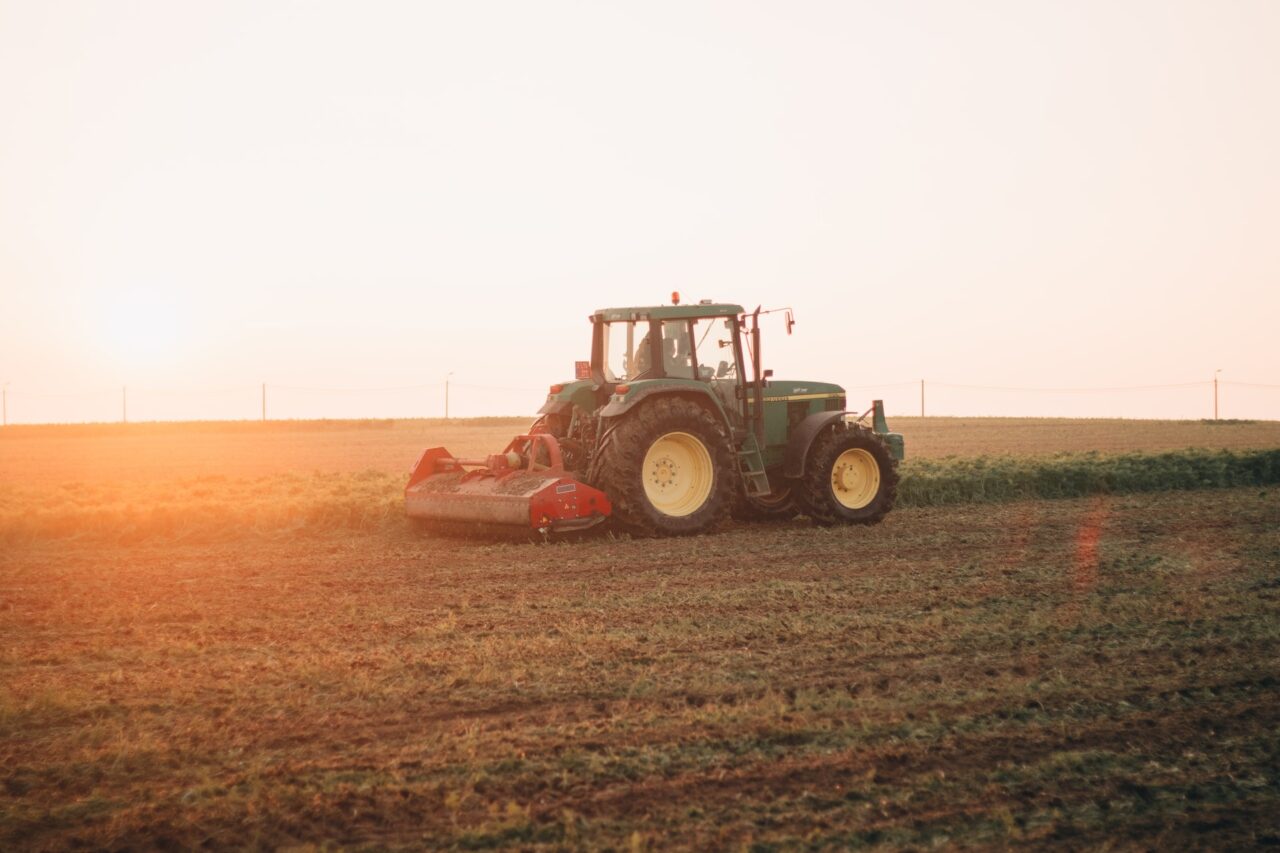
Ross Macmillan
Biography
Ross is a committed, even enthusiastic, engineer with a lifelong involvement and interest in agriculture. He has worked in the agricultural machinery industry, taught and done research in Universities and written curricula materials for professional agricultural engineering courses in the developed and developing world. He also likes to build engineering models in his workshop and to watch the green grass grow on the family farm on the northern outskirts of Melbourne.
Abstract
Within the context of the Creation the text explains how, in later life, I came to understand that working to help provide daily bread for the human population was, in part at least, a valid expression of doing the will of God on earth. This allowed an outlet for my two interests – a family-based background in agriculture and a personal interest in mechanical things.
Professional education in mechanical and agricultural engineering provided the basis for my life’s work in learning, teaching and writing in Universities in New Zealand, Australia and Indonesia. The text goes on to explain how these experiences also provided the opportunity to fulfil a need in agricultural engineering education for general curricula materials in both the developed and the developing world. On-line publishing by the University of Melbourne provided world-wide access to these at no cost.
Introduction
In seeking to share how we, with our particular interests and gifts, have sought to do the will of God in our personal and professional lives, I find myself at the intersection of three formative interests; firstly an interest in mechanical things, which seems to have been an inherent trait, and then in agriculture and the Christian faith, which both clearly had family origins.
For me the answer to the issue of what I would do or be in my life of course did not come about at the end of a period of rational analysis. The often lay-led, Methodist traditions of our family provided a solid, if simple, practical base for later, more mature theological understanding. But it is only in looking back that I recognise the hand of God in the series of opportunities that were presented and holistic choices that were made within my family and within the technical and Christian communities.
The mid-decades of the 20th Century, when I grew up, was a period significant change in the theological understanding of the relationship between evangelism and social involvement as biblical expressions of the gospel.[1]I came to see that helping to provide food and fibre could be seen, in some respects at least, as part of ‘doing the will of God on earth…’. The timely, local development of ‘agricultural engineering,’ as a subject for professional study at the University of Melbourne and associated work, therefore provided me with a field of employment that satisfied my three interests noted above. In doing so it helped to answer the prayer that Jesus taught us – ‘give us this day our daily bread’.
The Creation
The Creation, which itself is an expression of the will of God, gives the context in which we are invited to pray that God’s will, will be ‘done’ on the earth as it is in heaven. Genesis lists some of the resources which have been given for that purpose – light, land, water and [green] seed bearing plants for human, animal and plant life (Genesis 1:1–13).
In addition to these physical resources, the creation is also replete with other resources – laws, mechanisms and processes that God has provided so that the earth could be ‘filled’ through breeding, growth and evolution of plants and animals and through a Christian understanding and technological development by humans.[2]
The particular significance of agriculture and food production within this aspect of the ‘will of God’ is obvious from what is the significant reference to [green] seed bearing plants (Genesis 1:29–31) given their role in powering life on earth with fossil fuel and edible foods for animals and humans. These are one of the means by which the earth was to be filled, subdued and enjoyed (Genesis 1:26–28)
Further, the importance of food production is also seen in the following sentence in the Lord’s Prayer – ‘Give us this day our daily bread’. This should be seen in the context in which food is one of the most necessary human needs but also one which in terms of availability was, and is for many, the least reliable. In addressing ‘Our Father…’ the prayer also reminded the first century hearers, as it does us, that even with all the God-given physical and technological resources, the continual provision, particularly of all our daily needs is, in an ultimate sense, a gift from God’s all-gracious hand.
Agriculture and Engineering
Following the move from hunting and gathering to a settled life with sown crops, one of the most significant developments in agriculture was the introduction of various tools and their associated processes. For example, in ploughing, which is one of the most energy intensive agricultural processes, the use of an animal drawn wooden plough would have eased the burden of preparing the soil for sowing (Deuteronomy 22:10). Threshing and winnowing, are respectively the separation of the grain with husk from the ear, for example by animal tramping or pulling of a threshing sledge (Isaiah 41:15), and the separation of the grain from the husk by throwing the mixture up in the wind (Isaiah 30:24). These, together with subsequent developments would have allowed greater areas to be sown and harvested, and crops to be stored for later use, thereby enabling people to live in towns and cities.
However, the early connections between the theology of creation and its expression in new agricultural technology were not always welcomed. When Andrew Meikle returned to his native Scotland from the Netherlands in 1710, he built a hand-operated ‘fanning (winnowing) mill’ (of Chinese design) that he had seen there. Meikle’s winnowing machine was not welcomed, especially amongst some of the clergy. They asserted that it produced the ‘devil’s wind’ and ‘impiously thwarted the will of Divine Providence, by raising wind by human art, instead of soliciting it through prayer.’[3]
None-the-less such devices were widely adopted in the middle years of the 18th C and are still in use by those who seek relief from the tiring and uncertain work of winnowing in the natural wind.[4]
The formal study of such tools and processes is a more recent development; in earlier times these were not considered worthy of research and development because their use was often left to slaves and lower classes. One significant formal example of the positive initiatives to link the ‘mechanical arts’ to agriculture is seen in the establishment in the 1860’s of state- based Land–Grant ‘Colleges of Agriculture and the Mechanic[al] Arts’ in the USA.
As well as problems associated with these technological changes there are also many short, and perhaps long-term, environmental, social and other problems associated with developing agricultural systems. However, while the ever-present threat of food shortages and world hunger does not allow the luxury of stopping the research and development processes, neither should it encourage us to press on blindly and not consider the long-term implications of our production and environmental activities. This reminds us that not all problems in food production are scientific, technological, or economic and hence not all problems will be solved by more of these inputs alone.
Personal
I have always been interested in mechanical things – and gained a certain notoriety in our immediate family when I could not re-assemble a clock that I had pulled apart! However, my ‘Meccano Set’ (bought with sales of rabbit skins and mushrooms) offered endless enjoyable opportunities for ‘putting together’ and ‘pulling apart’ as well as lessons in the utilisation of local, land-based produce!
Those early years corresponded to something of a revolution in the sources of power and machines on our farm – as in the agricultural industries generally. Power for field machinery using tractors for cultivation, fertilizing, spraying and harvesting of crops replaced horses; static machines using farm generated and later mains electricity replaced human power for milking, shearing, crop processing, etc. I still have vivid memories of the time when each of these was introduced to our farm. All of which stimulated my interests in general engineering. Although I didn’t understand what it was at the time, I still wanted to be involved in it! So, with the encouragement of my parents and teachers, my post-secondary education led to a professional, mechanical engineering diploma and then, at the significant time in the newly commenced under-graduate degree, to studying Agricultural Engineering at the University of Melbourne. I was the eighth graduate in the first four years.
Following a period in the agricultural machinery manufacturing industry in Melbourne, I moved with Joan (my ever-loving wife and keen-eyed editor/proof-reader) and our two girls (one to be born in New Zealand), to five years of research and teaching at Lincoln College in the University of Canterbury. On the side, and largely unsupervised, I undertook a research-based Masters’ degree.
In 1972 we returned, as we had planned, to life on the family farm near Melbourne and, at a personally significant time, to a Lectureship in the Agricultural Engineering group at the University of Melbourne where I served for 25 years. While I was well known there, had appropriate teaching experience and a willingness to use it, I was fortunate to be appointed to a permanent position in the Faculty without a PhD. It was a case of both parties needing, in the short term, to reach the same mutually convenient outcome.
Together with various Christian experiences, my formative engineering experiences had been on a mechanised farm, at an engineering Institute, at an academic University and in a first-world industrial setting. My ‘vision’, – if that does not sound too pretentious, was to use my background interests and these experiences to promote agricultural engineering at a professional level. I saw this as the most fulfilling and effective way to encourage young people seeking higher education to move into this emerging and holistic field both in Australia and in developing countries.
Teaching at University of Melbourne
The unique policy of teaching a service course in agricultural engineering in agricultural science courses at University level in Australia came to Melbourne in 1926 with the appointment of the foundation Professor of Agriculture, Samuel Wadham, from the University of Cambridge. Wadham’s initial appointment as Lecturer in Agricultural Engineering was one, R.R. Blackwood, later Chancellor of Monash University.
My undergraduate teaching at the University of Melbourne continued the teaching of the engineering service course to agricultural science students and two themes at a professional level to the agricultural engineering students. Both including a full program of practical work. This proved a handful mainly because the latter course had never been taught in a systematic way and suitable curricula resources, including textbooks were almost non-existent.
The introduction of a theme on the ‘physical properties of agricultural materials’, although never really understood or accepted within the School of Agriculture, provided an interesting development in relation to in its plant breeding activities. This involved being a co-supervisor of PhD projects using engineering measurements to evaluate the outcome in their genetics research. One of these projects involved the development of novel methods of measuring the strength of canola seed pods which enabled the selection of strong lines and so reduced the losses from pod shatter during harvest. A second somewhat similar project sought to measure the shear properties of pasture grasses enabling the selection of ‘softer’ lines which would encourage sheep to increase their food intake and their associated growth rate.
Notwithstanding the general lack of interest by the Australian agricultural machinery industry in employing professional agricultural engineering graduates, the undergraduate teaching went on for some 20 years within the small, friendly group – many with Christian sympathies. However, with the rise of environmental awareness, the general argument got around that we needed to move from promoting greater food production to greener, cleaner production. So ‘my’ component of the undergraduate course associated with machines for producing and processing products was stopped and the balance, related to soil and water, became part the new ‘Environmental Engineering’ course.
In doing this the University was ill-prepared for the emerging field of so-called precision agriculture. In this field machine processes are controlled using the global positioning system to optimise each process at the scale of local areas (a few square metres) according to local needs rather than at an overall field scale. Nor was the University prepared for training students for the impending revolution involving the use of robots and drones for measuring and managing field processes.
I ought to confess that I was also technically ill-prepared for these developments and with hindsight should have been offered or should have suggested a retirement package. Instead, I took the part-time employment package while teaching and supervising in the engineering Masters’ course and a new option in the final year of the undergraduate Agricultural Science course.
During the years we had a trickle of overseas students in the Department doing some senior undergraduate course-work subjects, together with a minor thesis, for a Masters’ degree. About this time the Faculty had consolidated this course work Masters approach, and, in a far-sighted move, formed an ‘International Development Technologies Centre’ which, in addition to technical courses chosen from all Departments across the Faculty, taught general courses on the philosophy, economics, politics and education of and for community development. This Government funded program was aimed at preparing students to return to their home countries to work in the ‘traditional sectors’ rather than in the ‘modern sectors’. I continued part-time, teaching courses in agricultural technologies and supervising project work. Unfortunately, in the end the idea of studying for work in the traditional sector of developing countries lost its appeal and self-funded students chose the regular course-work Masters’ program.
As part of my long-term interest in agricultural engineering education and the lack of suitable curricula materials I wrote two monographs, one on agricultural tractor performance and one on fluid-particle mechanics with special reference to agriculture. The tractor monograph[5]published in 2002 is quite general and gathered material mainly from the research literature plus some of my unpublished work. It is presented in a didactic form suitable for professional under-graduate courses and others wishing to break into the research literature.
The fluid-particle monograph[6] published in 2006 is also based on the research literature but has a quite general trajectory plotting program available with it. The monograph illustrates many applications in agricultural processes involved with everything from seeds and fertilizer pellets to liquid droplets and even to sports balls! It opens up on a world-wide scale a tool for study and research that heretofore has not been available in such a general and freely available form.
Both monographs, which are quite unique, were written with the objective of serving the developing world but seem to have also met a need in the industrialised world as well. The question arose as to how best to make them available, particularly in the developing world, at no cost to me or the end-user.
The expensive, commercial publishing of hard copy textbooks does not meet the needs of many developing countries nor, it seems, the portfolio requirements or the social responsibilities of many international publishing companies. As an illustration, I can cite my experience in visiting the publishing house of Macmillan and Co in England. Alas, even with my name prominently displayed and my arguments about the needs of developing countries fully marshalled, I failed to win their interest. They seemed more interested in the common academic subjects, in spite of multiple titles of these already being available from various publishing houses.
Perhaps that failure was providential because at that time the wonderful facility of ‘on-line’ publishing had become available through the University library. Hence it was used to publish the monographs. It answered the need for world-wide availability on a personal computer with no cost to up-load, down-load or distribute the text.
Teaching in Developing Countries
With population pressures for increased crop production, the Green Revolution involving the use of modern rice varieties and double cropping (two crops in one year) was being promoted in SE Asia. This also required the use of small machines, for example, to quickly prepare paddy fields and dry the grain. This had been recognised by the International Rice Research Institute who provided designs of small, simple rotary tillers and flat-bed dryers suitable for local manufacture in simple workshops and their use by those who needed them.
To set up and optimise the use of these units requires the knowledge of, and measurement of their functional performance. How and in what terms this should be done for various crops and soils were questions that were relevant for University graduates to understand and have the competence to answer. This is the equivalent to teaching a man(sic) how to fish or even how to make the necessary fishing tackle!
However, the topic of agricultural engineering, which was usually taught within the Faculties of Agriculture, was often poorly resourced with little locally relevant curricula material. Although they had laboratories, these were filled with externally funded, high quality experimental engineering rigs which, as far as I could see, did not readily serve the agricultural industries and in particular its major crop – rice.
During these years the Australian Government, through Australian Universities, particularly the University of Melbourne, offered assistance in agriculture mainly to the Universities in the poorer and drier eastern islands in the Indonesian archipelago. The work consisted in up-grading University staff in relevant areas with lectures, course notes, laboratory equipment and perhaps a vision of how they might better serve their local agricultural industries. In designing the course which I was invited to conduct, I was conscious of the need to avoid promoting a particular type or scale of technology but rather the engineering science associated with the particular processes and the functional performance of the devices being introduced.
I led one team of six staff over a period of a month at the University of Hassanuddin in Ujung Pandang on the island of Sulawesi and later contributed to a Dutch team working on similar programs at the University of Brawijaya in Malang in eastern Java. Some 20 or so University staff from local and surrounding islands attended each. Students who performed well at these and similar courses were nominated to participate in the course work Masters’ program in Melbourne described above.
Publishing for Developing Countries
One of the most significant and formative aspects of the diploma course which I undertook as a young student was the learning from practical work – the testing of the functional performance of the various machines and the discipline of writing reports. These were skills that I never forgot and so I sought to apply and teach them in all the agricultural engineering teaching positions that I held.
The experience of teaching in Indonesia discussed above and later visits to developing countries in S.E. Asia and E. Africa confirmed to me that there was a widespread need for a set of simple designs and drawings of experimental agricultural engineering equipment that could be made locally in simple workshops. The series was entitled ‘Locally made Equipment for Teaching and Research in Agricultural Engineering’. It was hoped that they would be locally ‘owned’ and used to suit local agricultural needs – something that appeared to be missing in the externally funded equipment that was common in many departments. As an example, in drying rice, which is necessary in many tropical areas, there was interest in moving from on-ground sun drying to small scale bin drying or even continuous flow dryers. Among the simple experimental equipment we took to Indonesia, was a small, electrically operated dryer with relevant instruments that could be used to study how rice and other crops dry when heated air is blown through them.[7] The results could then be used to design a dryer of any type and scale.
Eight designs of experimental field equipment were later separately published and also made freely available through the on-line University publishing facility, now called Minerva Access.
On-line publishing of curricula materials provides a low-cost method of up-loading the material and a low-cost method of down-loading it and making it available to third world students. The continued interest in the tractor monograph over 17 years is illustrated by the fact that there has been some 26 thousand down-loads on the University website from 150 countries. In the last year, of the ten countries with highest number of down-loads, six were developing countries with 75% of the down-loads; India is the most popular with some 650 per annum partly because it has been adopted as one of the standard text books for their professional agricultural engineering courses; others countries included Ethiopia, Tanzania and The Philippines.
The on-line publications promoted some interesting developments. One was the translation of the tractor monograph into the Farsi language and its re-publication in Iran. I do not know how successful that enterprise has been but the English version still attracts interest in the Middle-East.
The other was to undertake a short consultancy as PhD supervisor in Italy for a student developing farm-scale machines to clear land and dig up anti-personnel land mines using remote controlled tractors. One reason I used to justify my interest in the project was because such mines are like agricultural root crops – they are buried some 100 mm below the surface, their exact position is unknown, they are easily ‘damaged’ but usually can be handled if done with care. The student gained her PhD and neither of us lost any limbs!
At the time of writing I am involved in a wrangle regarding the operational instability of quad-bikes and the provision of roll-over protection[8]. The lack of understanding of machine and soil dynamics by the universities and other parties concerned is very disappointing and has left the subject mired in controversy driven largely by overseas commercial interests. With the Government’s limited involvement and its failure to promote an appropriate industrial standard, it appears unlikely a long-term solution to the matter will be found in the near future.
Conclusion
In conclusion I acknowledge that I do not have any direct evidence of how my teaching and publications might have helped in designing or operating the associated machines or in promoting food production. The best evidence of their value and cause for gratitude is the growing interest in and apparent relevance to their use in developing countries.
I remember spending a brief time as a plough-boy driving two horses for my father. Now tractors with 100 times their power can be set up and managed in accordance with the principles described in the tractor monograph and steered automatically from the Global Positioning System. I also remember using a hand operated winnowing machine to clean some grass seed, much as my Scottish ancestors might have done 200 years ago. With significant help from the computer programmers, I produced the afore-mentioned trajectory plotting program that could be used to design a winnowing unit that might be fitted to a modern M$0.5 cereal harvester or a hand- operated winnower that would serve at village level around the world. Such is the power and wonder of modern technology and of our Creator-God who willed it so.
But perhaps the most rewarding experience was sharing with colleagues in teaching the engineering design of processes that have evolved over the centuries and are still relevant today; to hear of the successes of young people in applying them in industry, government, teaching and also in Christian work in the modern world is cause for gratitude.
In summary I also reflect on how the theology of creation and the technology of agriculture have changed without one moment’s thought of ‘devil’s wind’! I believe that such machines and processes are suitable, holistic means of utilising the earth’s resources and feel blessed in having been able to help develop them to play a part in seeking to answer our prayer, ‘Our Father …. give us this day our daily bread’.
I offer you tonight, Lord, the work of all the tractors … in the world.[9]
Bibliography
Moberg, David. 1973. The Great Reversal–Evangelism versus Social Concern. London: Scripture Union.
Macmillan, Ross. 2019. “Design and Evolution: A mechanic looks at the mechanistic world.” https://iscast.org/node/653.
Handley, James. 1953. Scottish Farming in the Eighteenth Century. London: Faber and Faber.
Macmillan, Ross. “Winnowing in the Wind – A Computer Study”, Agricultural Mechanisation in Asia, Africa and Latin America 30, no.1 (1999):56–58.
Macmillan, Ross. 2002. The mechanics of tractor-implement performance: theory and worked examples: a textbook for students and engineers. Melbourne: University of Melbourne. http://hdl.handle.net/11343/33718.
Macmillan, Ross. 2007. The mechanics of fluid – particle systems: with special reference to agriculture. Melbourne: University of Melbourne.
http://hdl.handle.net/11343/34073.
Macmillan, Ross, and John Sutherland. 2003. “Locally made equipment for teaching and research in agricultural engineering.” Manual No.7. Grain drying rig. Melbourne: University of Melbourne. http://hdl.handle.net/11343/33764.
Macmillan, Ross H.2017. “Quad-Bike Operational Instability.” https://doi.org/10.3390/safety3020015
Quoist, Michael. “The Tractor” in Prayers of Life. Dublin: Gill and Son, 1966.
ENDOTES FOR MACMILLAN
[1] ‘Agricultural engineering’ is the research design, development and management of the physical machines, structures and processes required to serve the growing of agricultural crops and the primary storage and processing of their products.
[2] Macmillan, “Design and Evolution.”
[3] Handley, “Scottish Farming in the 18th Century.”
[4] Macmillan, “Winnowing in the Wind,” 56-58.
[5] Macmillan, Tractor implement performance
[6] Macmillan, Fluid-particle systems
[7] Sutherland and Macmillan, Grain drying
[8] Macmillan, Quad-bike operational instability
[9] Quoist, Prayers of life


